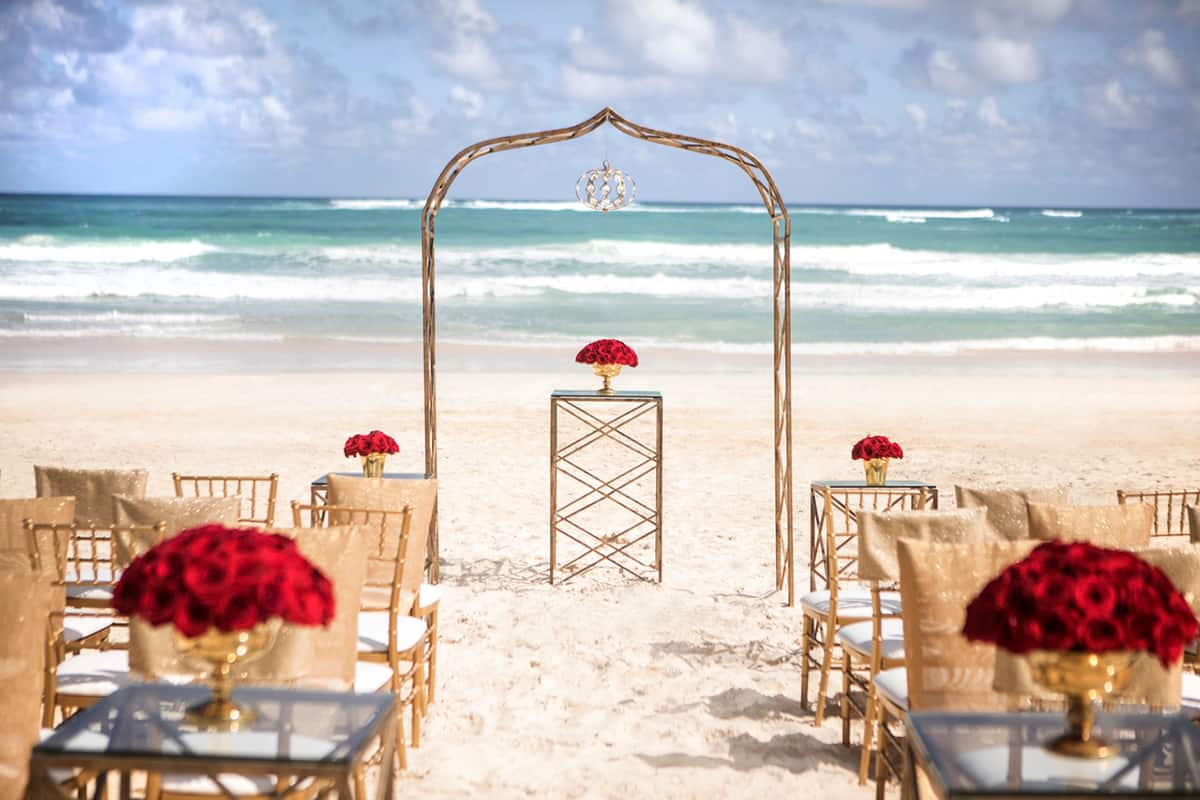
The wedding cake is the centerpiece of the reception—the first thing your guests see when they arrive and one of the final items served at the reception. Not only does it make a first and last impression, but it also represents the sweetness of your special day and the bond you’re forming by cutting the first slice together.
Just like securing the venue or selecting your gown, choosing the right cake baker is very important. Because reputable bakers book up quickly, it’s important to reserve your baker four to six months in advance, as many bakers are only able to commit to one or two weddings in one weekend. Begin by looking through magazines or collecting specific items that reflect your personal style.
“Brides are finding inspiration in anything and everything,” says Jamie Fine, owner of Sugarplum Visions in Atlanta, Ga. “We’ve had brides bring in anything from a pair of shoes to a piece of fabric from an upholstered sofa.”
Traditional wedding cakes are constructed of multiple tiers, or levels. Shapes range from round or square, to hexagonal or molded, in which the cake is shaped into a specific object. Most cake bakers recommend that brides choose an overall theme or style for their cake before discussing how many tiers it should be. Bakers determine how much cake is needed on a per person basis. If the wedding cake will be served as the primary dessert, plan to have enough slices for everyone in attendance. Even if everyone doesn’t eat cake, some venues will cut the cake and pass it to each place setting.
Not only is the wedding cake a visual focal point, but it should also taste good. While some brides prefer a traditional vanilla or yellow butter cake, others are choosing bolder flavours such as chocolate or lemon poppy seed. For a Caribbean destination wedding, you may consider serving an authentic rum cake. Steeped in Caribbean tradition, these cakes are made of old-fashioned ingredients and assorted fruits soaked in native white or black rum.
Brides are further personalizing their cakes by choosing fabulous fillings. One of the most classical choices is buttercream; however, fruit fillings such as raspberry, strawberry or mango add a splash of colour as well as flavour. Other unique fillings include coconut, caramel and ganache, a rich, creamy filling made with heavy cream, butter and white or dark chocolate.
“Brides are really looking outside the box and realizing that wedding cakes are not just white on white,” Fine says. “Two of the hottest trends right now are chocolate/chocolate cakes and cupcakes. If a bride chooses cupcakes, we use a tiered cake stand to display them, and for the bride who still wants to cut the cake, we place a small cake on the top tier.”
When it comes to frosting, the most common types are buttercream and fondant. Known for its exceptional taste, buttercream is a smooth, creamy icing that can be coloured and flavoured with almost anything; however, because it is made of butter, it is very likely to melt in high heat or humidity. Fondant is a sweet, elastic icing rolled out like dough and draped over the cake. While it is more likely to sustain warmer temperatures, a fondant-covered cake is generally more expensive. If possible, serve the cake indoors no matter what icing is used.
Once the icing is on the cake, there are countless ways to decorate it. Bakers use unique piping techniques such as basketweave and latticework to create interwoven and criss-cross designs, as well as cornelli, a technique that produces an elaborate lace-like pattern. Edible sugar pastes such as marzipan and gum paste are often used to construct lifelike flowers, fruits and more. For a tropical or beach-themed wedding, Fine suggests incorporating natural elements such as starfish and seashells and using rolled fondant to simulate waves. To fully bring the theme to life, she also suggests displaying the cake on a nautical, net tablecloth and surrounding it with scattered seashells and votive candles.
Once the cake is constructed, it’s time to top it off. Gone are the cliché bride and groom toppers. Brides are using anything from Swarovski crystal monograms and glass ornaments to fresh flowers and natural coral.
If you’re planning to save the top tier of the cake for your anniversary or christening of your first child, remember to discuss this with your caterer in advance. You need to make sure it is preserved properly so that it’s just as sweet and special as it was one year ago. After all, you didn’t just choose your cake, you helped create it.




